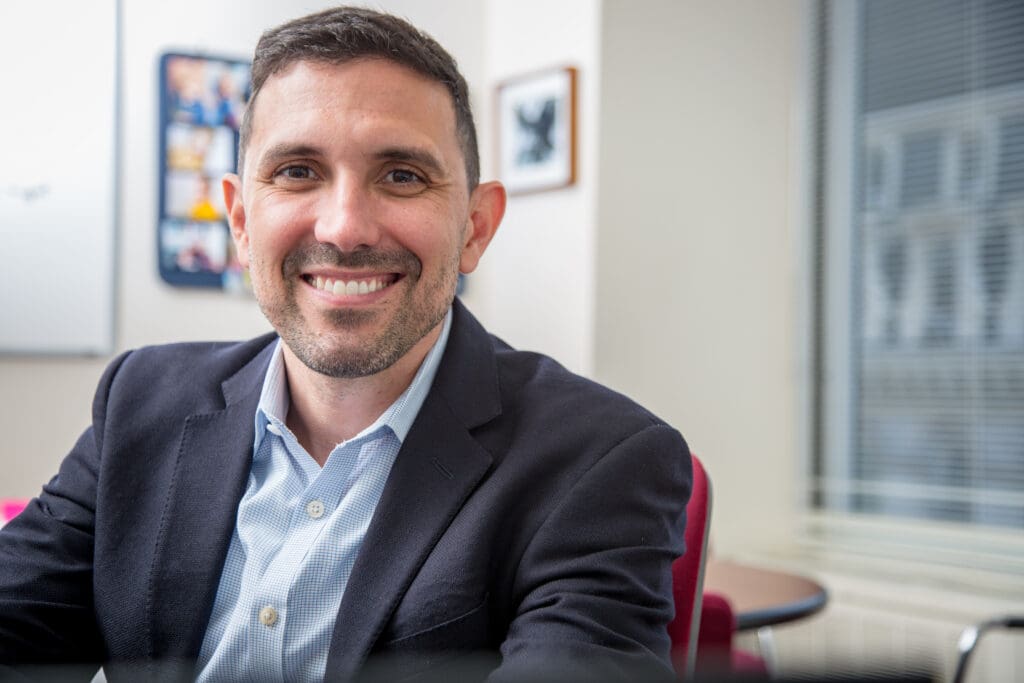
Earlier this year VNSNY rebranded to become VNS Health. How does this figure into the organization’s growth strategy?
Since our founding 129 years ago by the public health pioneer Lillian Wald, VNS Health has always provided health care services to New Yorkers where they live. As the health care needs of New Yorkers evolved over the years, our organization has also evolved to meet those needs. Our aim now is to carry this unique legacy forward, by expanding the reach and scope of our services beyond the New York area so we can impact even more people. We want do this in a coordinated way as one unified VNS Health—which our rebrand aligns us to do. By rebranding to VNS Health, we are continuing to draw on our historical legacy while also positioning ourselves as an innovative home- and community-based care leader. This concept is also captured in our new tagline: “The Future of Care. The Comfort of Home.”
How does VNS Health envision doing this?
Our growth opportunities fall into two categories. One involves the expansion of our core programs and health plans—the services we’ve been providing for decades, where we have tremendous expertise and deep market presence. We’re concentrating heavily on recruiting and retaining talented team members, so we can increase our capacity to provide home care, hospice care, behavioral health and managed long-term care health plan services to individuals who need them. We’re also partnering with local physician organizations to help connect their vulnerable patients with our services. And we’re engaging with specific cultural groups—for instance, we’ll soon be opening two new VNS Health community centers in Flushing and Sunset Park, where multilingual staff will help connect clients with health care services and other resources.
Looking beyond those core services, what new offerings are in the works?
Our other growth opportunity involves leveraging VNS Health’s established capabilities by partnering with other health plans and health systems to provide innovative health care solutions for individuals with complex care needs—both within New York State and across the country. We’re marketing these products and services as part of our new VNS Health Professional Solutions business line.
Can you give some examples?
One service we’re offering to other organizations is VNS Health’s care management expertise. We use a team-based, tailored approach to manage the health of individuals with complex medical and/or social issues, drawing on technology like remote patient monitoring where appropriate. This service includes helping people access resources that address their social determinants of health. We’re currently in discussions with several organizations on how we can support them with these care management solutions. We can also help provide access to palliative and hospice care for health plan members with life-limiting illnesses. In addition, we’re leveraging our historical patient and member data to develop advanced predictive analytics and other technologies that we’ll be offering to other organizations. We’re already seeing strong interest in our HELPS tool, which uses a sophisticated algorithm to determine people’s need for personal care support in the home.
On a personal note, you first joined VNS Health in 2005, and you’ve returned twice since then. What brought you back?
It’s really this idea that we’ve always met people where they are. I was working in the finance sector in 2005 when I read an amazing article about how the Nurse-Family Partnership, one of VNS Health’s safety-net programs, mentors young, at-risk mothers and their babies, and the long-term impact this intervention can have on the lives of both mom and child. That caught my attention, and it’s why I decided to interview for a job here. It’s also why I came back to VNS Health after leaving to attend graduate school. What we do is very special, compared to traditional kinds of health care systems. When I rejoined VNS Health a second time as Chief Strategy Officer four years ago, the organization was just embarking on the mission-driven, long-term strategy we’re now engaged in. The opportunity to support the health and well-being of even more individuals and families going forward is incredibly exciting, and I’m happy to be a part of it.



